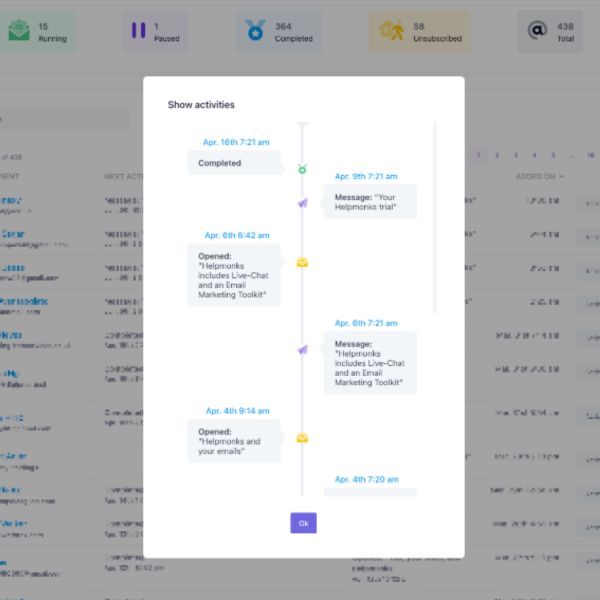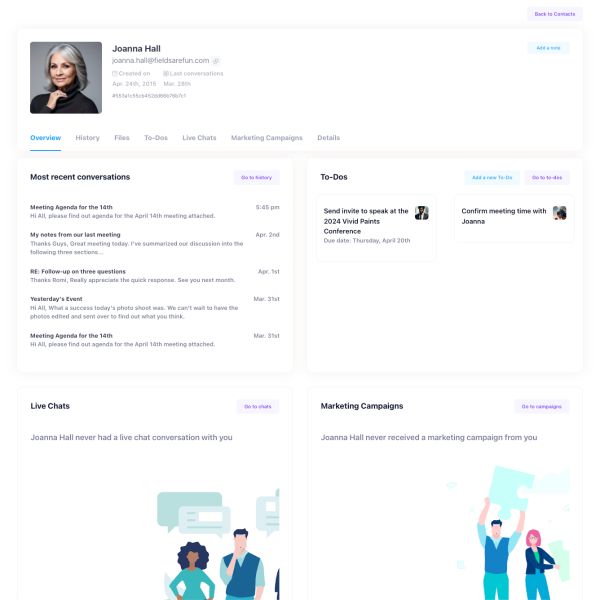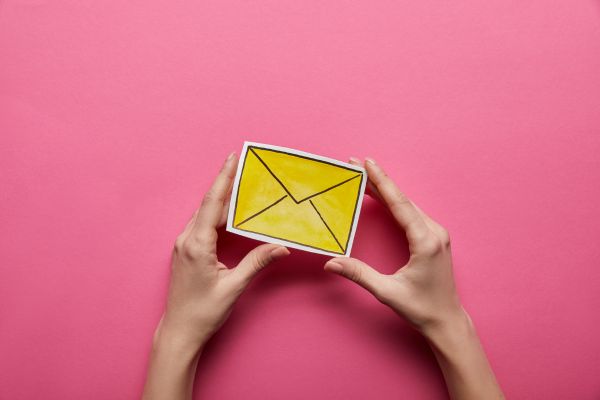
With each passing year, new ways to market our products and services emerge. New technologies, new digital platforms, and the latest trends for customer engagement keep us on our toes. Yet despite all the changes, direct marketing via email remains a powerful marketing tool.
Email marketing is here to stay. However, a more targeted approach is often necessary to make the most of your email campaigns. Using targeted email marketing is the best way to keep your methods relevant while continuing to use an established communications tool.
Want to know what this marketing approach will do for you and how to implement it in your company? It's all here in our ultimate guide to targeted email marketing.
What Is Targeted Email Marketing?
In a nutshell, targeted email marketing is the practice of sending out marketing emails that are personalized and highly relevant to the recipients. Unlike general mass marketing, targeted marketing is directed at a more specific area of your customer base.
Part of this process is something called email segmentation. Email list segmentation is the key to targeting the right customers with the right marketing. No targeted email marketing campaign will succeed if you fail at the segmentation stage.
What Is Email List Segmentation?
Email list segmentation is the process of dividing your email marketing list from your customer email CRM into groups based on selective criteria.
This lets you target some groups with one product, and others with another. It allows you to target potential customers with new products, and regular customers with special offers on their favorites.
We'll take a closer look at email segmentation later in this article. But before we do, let's examine the benefits of targeted email marketing.
Benefits of Targeted Email Marketing
Targeted emails offer a range of benefits. Here are the top four that all industries can enjoy:
1. Improved Relevance and Personalization
Targeted marketing emails improve your marketing materials' relevance to the recipients. This means you won't be wasting time and resources on the wrong targets, and they won't feel you're wasting their time, either. Instead, you'll be speaking to their specific needs. This will increase customer engagement, leading to a boost in sales.
2. Higher Conversion Rates
You'll see higher conversion rates with targeted marketing. Because your email recipients feel the emails are relevant to them, there's a greater chance of them opening the emails and clicking on product links. On the road to sales victory, that's already half the battle won!
3. Enhanced Customer Loyalty
Targeted email marketing boosts customer loyalty by delivering personalized content based on individual preferences. Tailored messages create a sense of value and connection, fostering trust.
Exclusive promotions and offers will also incentivize customer loyalty. Your customers will feel special and heard because you're addressing their individual needs.
4. Increased Engagement and Interaction
Businesses that use targeted marketing notice a dramatic increase in customer engagement and interaction.
It's not difficult to see why. Targeted, personalized marketing content resonates with your potential customers. It draws them in and makes them want to interact with your company and your brand. They start to think, "If they offer this product that I like, they probably offer other products I'll like to!"

How to Create a Targeted Email Marketing Campaign
Are you ready to create your own targeted email marketing campaign? Follow these seven steps to create a highly personalized campaign.
1. Define Your Target Audience
First things first: define your target audience. Who is your product or service aimed at? This may be a niche market, and if so, you'll already have an exact idea of who you are targeting. But if your offerings are more universal, your target audience may be a real melting pot of demographics.
This can make it a little harder to target them as a whole, but not impossible. All you need to do is get a bit more specific with your marketing campaigns. It may even be necessary to create multiple campaigns, aimed at differing sections of your wider audience. And that's where segmentation comes in.
2. Segment Your Email List
If you want to target a specific area of your customer base or potential customer base, you need to segment your email list. There are several criteria that you can use to segment your audience, and we'll get to those in a moment.
Segmenting an email list entails creating subdivisions within your main email list so that you have multiple shorter lists. This way, you can send out different campaigns to different segments, making each campaign targeted at the right audience.
Your specific aims with each campaign will give you the direction you need for selecting segmentation criteria.
3. Understand Customer Journeys
Understanding customer journeys will help you to craft more targeted email campaigns, every time. The customer journey refers to the complete experience that they have with your company along the path to purchase.
Map out your customer journey, and use this visual tool to streamline and perfect the process. Where are all the possibilities for awareness of your product or service? How are they interacting with you on these platforms?
Include all the stages along the way, from awareness to loyalty, that you need the customer to go through. You may identify areas that need improvement, or that you can cut out altogether to speed up the journey. A lot will depend on your unique offerings, and how demanding an audience you have.
4. Craft Personalized Content
To fully engage your target, make your content personal. Personalized content will make the recipient feel that you are speaking directly to them and their needs. It's an effective way to target a specific audience with your marketing materials for maximum impact.
Personalization could be as simple as using their name in a marketing email. However, personalization also infers that the item or service you are promoting in that email, relates to them, personally. This is why understanding your unique audience is crucial to a successful targeted email marketing campaign.
5. Create Compelling Subject Lines
No matter how engaging the content, all will be lost without a compelling subject line. Most people won't bother to open an email with an unimpressive subject line. Conversely, if you captivate their attention here, you stand a better chance of success.
The subject line holds more power than you might realize. A catchy subject line must not only get their attention but leave them wanting more. It must compel them to open that email. But because this is the first glimpse your audience has of your email, there's no room for errors.
Double-check and triple-check that the language use, spelling, and grammar are correct. If you're using their name in the subject line, spell it correctly. Some people have common names, with uncommon spellings. Make a mistake with their name and you'll lose them right there!
6. Test and Optimize
You can't afford to become complacent in marketing. Always strive to be the best by regularly testing and optimizing your marketing content. Times change, and marketing trends change with them, for good reason.
People want different things from products and services at different times in their lives. As the world's population grows, so too does the number of competitors rivaling for their attention. And with technology progressing so rapidly, the next best thing is always on the horizon.
But there's another reason why you can't stop looking for ways to improve your marketing. Your audience is constantly bombarded by marketing emails from your competitors. If you want to keep them focused on you, stay up-to-date with the latest marketing trends, and regularly test their effectiveness.
7. Track and Analyze Results
This is the natural follow-up from testing and optimizing your marketing emails.
When you track customer engagement metrics and analyze your email marketing results, you'll gain deeper insights into how to effectively target your audience. Once you've crafted a more personalized email marketing campaign, you need to keep tracking and analyzing the results to stay on track.

8 Best Ways to Segment Your Email List
Here are eight of the best ways to segment your email marketing list for maximum relevance, engagement, and conversions.
1. Demographics
Demographics is the obvious place to start. Look at what you're marketing, and consider the age, gender, and cultural affiliation it most speaks to. You're more likely to hit the right target if you match the demographics of your segment to the intended customer profile for your product or service.
2. Purchase History
Purchase history is another good way to segment your email marketing list. Previous customers may easily become customers again. If the product you're selling is in the same category as what they've bought before, they may be interested in this, too.
3. Behavioral Engagement
Behavioral engagement is the practice of engaging potential customers through observation of their previous actions and behaviors.
This includes how they interact with your brand on your website or social media pages. Have they asked for more information or subscribed to a newsletter? What have they looked at and interacted with? This information will help you target them more directly.
4. Lifecycle Stage
The lifecycle stage of a customer refers to the different phases in their journey with your company. This begins at initial awareness of your brand and goes all the way to post-purchase. It includes stages such as awareness, consideration, decision, and retention.
Segment your list based on the different stages your customers are at in their journey. For customers in the awareness phase, introductory emails are appropriate. For customers who have already purchased, send a follow-up or a personalized special offer. This can encourage loyalty and repeat business.
5. Interests and Preferences
Segment your list into groups that share similar likes, behaviors, or characteristics. You can gather this data through surveys, sign-up forms, and interactions on your website or social media.
Your prospective customers' interests and preferences offer vital clues to which products and services they may be interested in. Use this information to segment the list further.
6. Survey Responses
If you've had no success getting more information about your target audience, ask them directly, with a marketing survey.
A short survey on your website provides the perfect opportunity to create a tailored segment for your targeted email marketing. Ask about hobbies to get clues to their preferences, and their occupation or job title for clues to their spending power.
7. Geography
Geography refers to the location your target resides in. Segmenting by geography can be helpful when promoting a service in a specific area. This ensures that everyone who receives the email can potentially take advantage of the deal.
Location is the best way to segment your audience for location-specific services or new store launches in their area.
8. Lead Source
A lead source is a channel through which someone hears about your product, service, brand, or company.
This will differ from one lead to the next. It could be a web search result, a visit to your website, or a view of a post on your social media platform. Using this as segmentation criteria can be very successful as it means you'll retain the interest that brought them to you in the first place.
Conclusion
Targeted email marketing is the super highway to customer engagement and bigger, better sales. But to maximize all of your email marketing efforts, you need effective marketing email management. The right email management platform will have all the tools to implement the tips above, and more.
And that's what you get when you trust Helpmonks with your email marketing management needs.
Our platform is the perfect solution for workplace email collaboration, inbox management, targeted email marketing campaigns, and customer engagement.
Register an account to enjoy a 30-day free trial!






